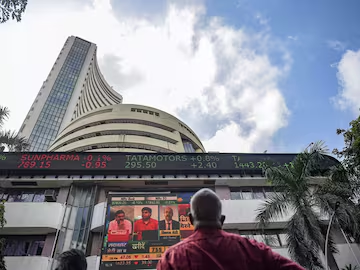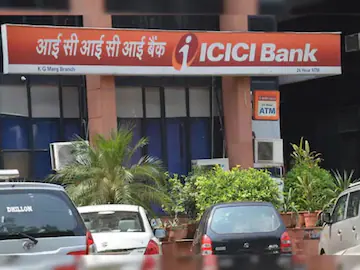Sensex Tanks Over 700 Points, Nifty Below 24,150; IndusInd Cracks 18%

Upon the commencement of trading on Friday, the Indian benchmark equity indices BSE Sensex and Nifty 50 exhibited a slight uptick in their opening values, only to swiftly diminish their gains moments thereafter.
October 25 saw a lackluster start for the Sensex and Nifty as they opened flat and swiftly turned bearish due to uninspiring earnings and continuous foreign outflows. IndusInd Bank took a major hit on the Nifty 50 index, tumbling by 18%. The bank’s net profit for Q2FY25 plummeted by 40% to Rs 1,331 crore compared to the previous year, falling short of projections primarily because of a significant increase in loan loss provisions.
On the flip side, there was a notable surge of more than 4 percent in the shares of consumer giant ITC after a remarkable Q2 showing, propelled by robust growth in cigarette sales and a thriving hotel segment.
By 11 AM, the Sensex had decreased by 627.08 points, equivalent to 0.78%, reaching 79,438.08. Simultaneously, the Nifty had dropped 250.30 points, marking a 1.03% decrease down to 24,149.10. Out of the total shares, 414 showed an upward trend, 2806 witnessed a decline, while 83 remained stagnant.
Less than fifty percent of the 30 stocks in the BSE Sensex were in negative territory, with IndusInd Bank leading the losses at a 10 percent decline. Following closely behind were NTPC, Larsen & Toubro, Mahindra & Mahindra, and JSW Steel.
On the flip side, ITC spearheaded the gains with a rise of 3.15 percent, trailed by Axis Bank, Asian Paint, Hindustan Unilever, and HCLTech.
Amidst the Nifty 50 index, 19 stocks were showing gains, contrasting with the downward trend in the remaining stocks. IndusInd Bank led the decliners with a 10% drop, trailed by NTPC, Larsen & Toubro, Mahindra & Mahindra, and JSW Steel, keeping the losses in check.
ITC emerged as the leading performer on the index, recording a 3.23 percent increase, surpassing other notable gainers such as Axis Bank, Britannia Industries, Asian Paints, and HCLTech.
The Nifty Bank, Auto, Metal, Realty, Consumer Durables, and Oil & Gas sectors experienced losses, whereas the FMCG index surged by 1.45 percent.
The Healthcare sector, Pharmaceuticals, Financial Services, and Public Sector Banks were showing positive momentum in their trading activities.
The Nifty Midcap 100 experienced a decrease of 0.29 percent in the overall markets, whereas the Nifty Smallcap 100 saw a slight increase of 0.04 percent.
Insights provided by Dr. V K Vijayakumar, Geojit Financial Services’ Chief Investment Strategist, on market perspectives.
The recent market activities indicate a noticeable shift in the long-term market pattern. The predominant trend that propelled the Nifty from its March 2020 COVID low of 7511 to over 26200 by September 2024 was the successful “buy on dips” approach. However, with the considerable, continuous, and unparalleled selling by the FIIs, amounting to Rs 98085 crores as of the 24th of this month, the efficacy of the buy on dips strategy has diminished.
Global Cues
On Friday, the markets in the Asia-Pacific region saw predominantly upward movements as investors anticipated Japan’s general election scheduled for the weekend. Apart from that, the market sentiment remained positive.
The Nikkei 225 benchmark experienced a decrease of 0.67 percent, with the Topix also down by 0.70 percent, indicating a potential fifth consecutive day of decline.
South Korea’s Kospi index rose by 0.45%, while the Kosdaq small-cap index declined by 0.75%, showing a noticeable difference in performance.
The Shanghai Composite in China saw a 0.23% increase, the CSI300 also went up by 0.45%, and Hong Kong’s Hang Seng index rose by 0.73%.
The S&P/ASX 200 index in Australia recorded a 0.34% increase.
Amidst choppy trading on Thursday, global stocks slightly rose, breaking a three-day losing streak. Concerns regarding the upcoming US elections and potential interest rate cuts were eased by the performance of US Treasury yields and positive corporate earnings.
The S&P 500 and Nasdaq indices closed up, driven by increases in consumer discretionary sectors and declines in materials and utilities. Conversely, the Dow saw a decrease in its value at the close of trading.
The Dow Jones Industrial Average declined by 0.33% to reach 42,374.36, while the S&P 500 increased by 0.21% to 5,809.86. Additionally, the Nasdaq Composite saw a growth of 0.76% to settle at 18,415.49.














